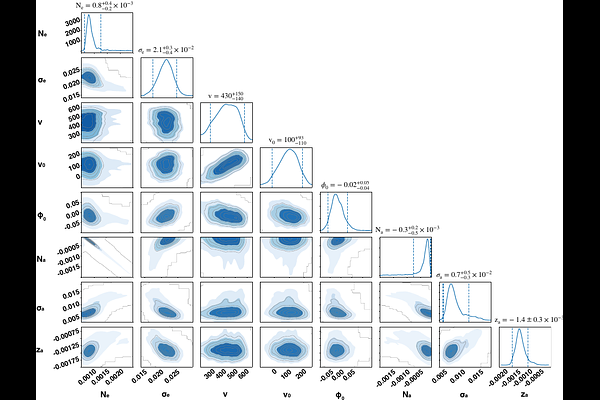XRISM spectroscopy on orbital modulation of Fe Ly$α$ lines in Cygnus X-3

XRISM spectroscopy on orbital modulation of Fe Ly$α$ lines in Cygnus X-3
Daiki Miura, Hiroya Yamaguchi, Ralf Ballhausen, Timothy Kallman, Teruaki Enoto, Shinya Yamada, Tomohiro Hakamata, Ryota Tomaru, Hirokazu Odaka, Hatalie Hell, Hiroshi Nakajima, Shin Watanabe, Tasuku Hayashi, Shunji Kitamoto, Kazutaka Yamaoka, Jon M. Miller, Keigo Okabe, Itsuki Maruzuka, Karri Koljonen, Mike McCollough
AbstractTo understand physical processes such as mass transfer and binary evolution in X-ray binaries, the orbital parameters of the system are fundamental and crucial information. Cygnus X-3 is a high-mass X-ray binary composed of a compact object of unknown nature and a Wolf-Rayet star, which is of great interest in the context of wind-fed mass accretion and binary evolution. Here we present XRISM/Resolve high-resolution spectroscopy focusing on the Fe Ly$\alpha$ lines in its hypersoft state. We perform an orbital phase-resolved spectral analysis of the lines to study the orbital modulation of the emission and absorption lines. It is found that the emission lines reflect the orbital motion of the compact object whose estimated velocity amplitude is $430^{~~+150}_{~~-140}~~\mathrm{km\,s^{~-1}}$, while the absorption lines show a variation that can be interpreted as originating from the stellar wind. We discuss possible mass ranges for the binary components using the mass function with the estimated value of the velocity amplitude in this work, combined with the relation between the mass loss rate and the orbital period derivative and the empirical mass and mass loss rate relation for Galactic Wolf-Rayet stars. They are constrained to be $(1.3\text{-}5.1)\,M_\odot$ and $(9.3\text{-}12)\,M_\odot$ for the assumed inclination angle of $i = 25$ deg, which becomes more relaxed to $(1.3\text{-}24)\,M_\odot$ and $(9.3\text{-}16)\,M_\odot$ for $i = 35$ deg, respectively. Thus, it remains unclear whether the system harbors a black hole or a neutron star.